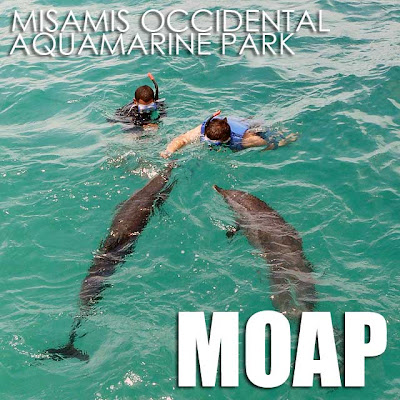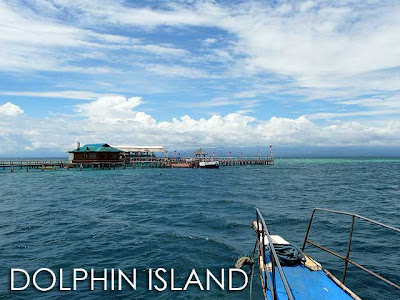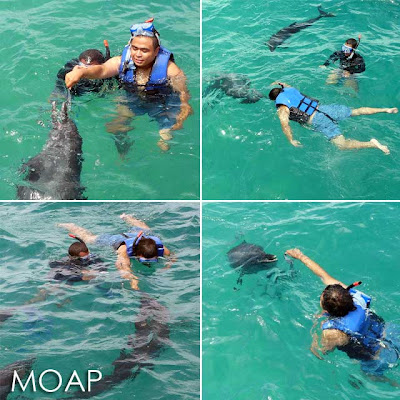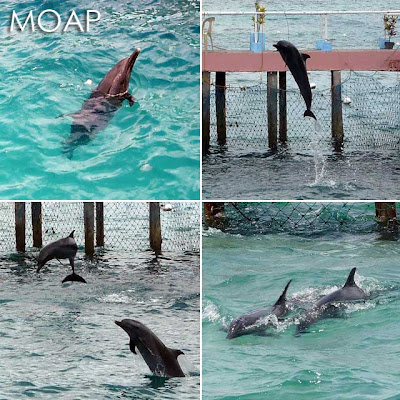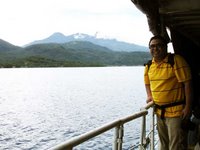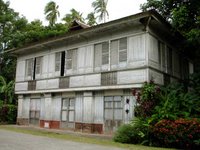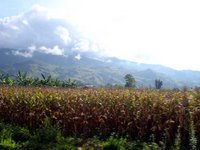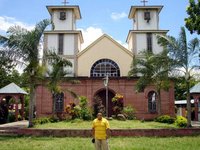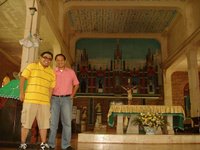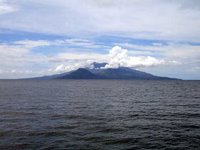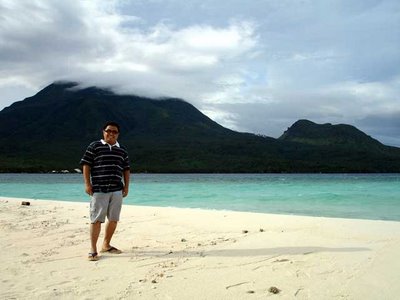
My day started quite early today. I woke up at 5 a.m. to take a pump boat to White Island. The
habal-habal had offered last night to take me around the entire island today for PHP400. And I thought it was worth it since we would start at 5 a.m. and I wouldn't have to worry about the gas since it was included.

So from the pension house, it was a few minutes ride to the beach closest to White Island which is in Yumbing if I'm not mistaken. Unlike White Island, the sand in Yumbing was very dark because of the volcanoes. The usual charge for a pump boat to the island was PHP400 but I got it at PHP350. It was still kinda dark when we left for the island not just because the sun wasn't up but since it was quite cloudy that morning.

White Island is a sandbar about two kilometers from the beaches of Agohay and Yumbing. It is also known as Medano Island.

When I got there, the island was in the shape of a horseshoe but I was told that its shape changes depending on the tide. This uninhabited island offers visitors a stunning view of Mounts Hibok-Hibok and Vulcan. I noticed some bamboo and nipa tents, wooden benches and tables on the sandbar. I would later learn that these were set up by some enterprising residents of Camiguin who sold coffee and breakfast to early birds like me, lunch, snacks and drinks.

I bought for myself a kilo of
lansones for breakfast. It would be a shame if I did not try out the
lansones in Camiguin which is said to be the sweetest in the country.
As if to taunt me, it started drizzling. From White Island, you could clearly see the rain clouds drenching Camiguin Island. It's a good thing the rains didn't last long and the sun finally came out before I left.

I didn't stay too long on the sandbar since I had a lot more to do for the morning. So by about 8 a.m., I was back on Camiguin Island.
After freshening up, it was off for a trip around the island. Camiguin province only has five municipalities and you could visit all of them in just two hours. Here is a
map of Camiguin which you could refer to while reading. We first went around
Mambajao to check out some old structures.

From Mambajao, we went southwards towards
Mahinog. We stopped over in Barangay Tupsan, the last barangay of Mambajao to take photos of the Borromeo House completed in 1928. I was tempted to go inside to check out the house but I didn't have much time since I had four more towns to visit.
In Mahinog, we again stopped to take photos at Hubangon where there were more old houses. You can't miss the white and chocolate brown Pascual Lim ancestral home (below right) built in 1924 since it had Chinese characters on its facade.

Near the boundary of Mahinog and
Guinsiliban, we passed by the
Taguines Lagoon, which some say is man-made but is actually an old volcanic crater. It is used primarily as a fishpen but has a floating restaurant, lodging facilities and a conference hall. Aside from that, there was nothing much to see in Mahinog.
As we neared Guinsiliban, the road moved further away from the coast and we were treated to some inland forests. But we would find ourselves near the coast again as we nearned the town proper. Along the way, it started to drizzle again! What wierd weather since it would rain, then the sun would come out, then it would rain again. Oh well!
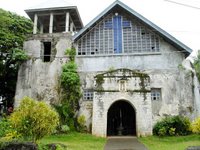
There were more old houses in the poblacion of
Sagay. But the most popular landmark of this town is its coral stone church completed in 1882. The facade was still intact but like in many Philippine churches, the priests did a good job in erasing most of it since the inside looked more like a multi-purpose hall than a church to me. Sigh!
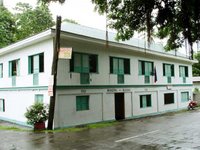
We then proceeded to
Catarman and the first thing I noticed in the town proper was the old municipal hall which had three years on its facade - 1912, 1917 and the last one was covered but it was somthing like 1928. They have a newer municipal hall a few meters up a hill, which is quite old as well, and its good they preserved the old one which is now the local civil registrar.
In front of the new municipal hall is a 1928 monument of Dr. Jose Rizal (below). Attention to it is however obscured by a satellite dish in front of it as well as a tall wire fence right beside it. There were also a lot of old houses in Catarman.
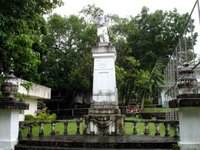
From the town proper, we proceeded to the
Sto. Nino Cold Spring four kilometers away. I didn't intend to swim but I guess it would be nice to check it out. The resort had a pool measuring 25 meters by 40 meters and half a meter deep of cold spring water sprouting from its sandy bottom. I'm sure it would be fun swimming here during a hot summer day. But looking at the cold water on a rainy day wasn't quite enticing.
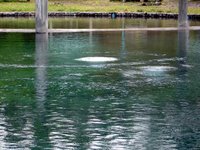
Next on the itinerary was another cold spring resort, the Soda Swimming Pool in Bura which was known for its bubbly soda-like water. I should come back during the summer so I could appreciate all these cold therapeutic springs. By this time, the sun had come out again. At 11 a.m., we were back in Mambajao and I asked the driver to take me to the old houses near the market area (below).
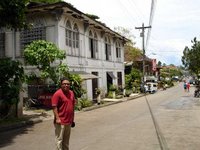
Obviously, I could not take a jeepney or van back to Benoni since I would miss the 12 noon ferry back to Balingoan and a later ferry would be cutting it too close to my 5:30 p.m. flight. So I accepted the offer of the driver to take me there for an extra PHP100 which is the
habal-habal rate from Mambajao to Benoni. On the way back to Benoni, I noticed the sign to
Katibawasan Falls. Arggghhh! I completely forgot about it and I had planned to visit it today. But since there was no more time, I was resigned to the fact that I would have to see it when I visit Camiguin again.
We got to the port just in time since they were already pulling the plank. Had I arrived a minute later, the ferry would have left! I didn't even have time to buy Camiguin's famous
pastel!
From Balingoan, I took a van to Tagoloan where Simone was waiting for me. I had lunch at the hospital since she was still doing her rounds. Only then was I able to savor the
pastel, which is actually a dinner roll filled with
yema. Although they come in different flavors now but you will have to buy them in their shop in Mambajao. We left the hospital at about 3:30 p.m. which gave us just enough time to drive to the Lumbia Airport for my flight. And now I'm back home, back to reality and back to work. Until the next adventure!
More photos of
Camiguin in
Multiply.












